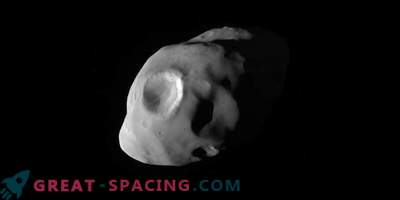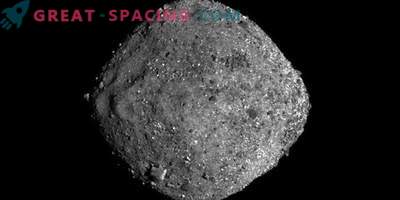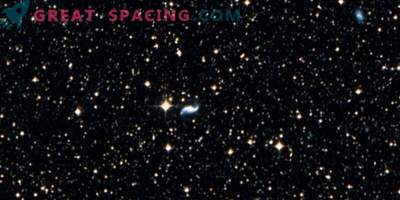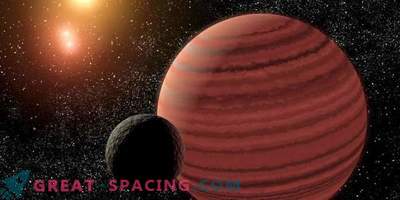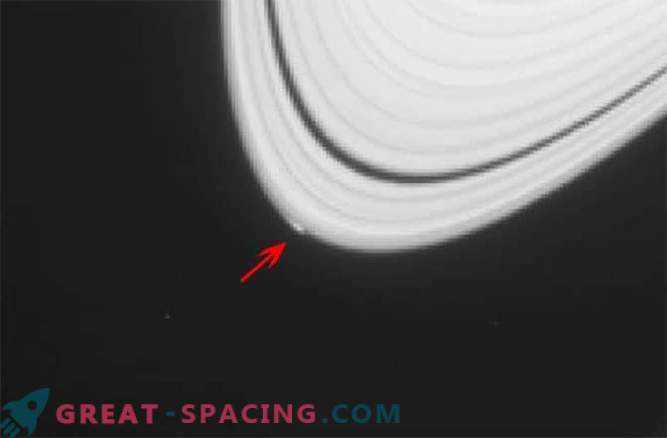
The photograph transmitted by NASA’s Cassini spacecraft, which was in orbit around Saturn, noticed some unusual change on the outer edge of the A-ring of the gas giant. It looks like a knot or arc is 20 percent brighter than the surrounding ring material, and astronomers interpret this as a gravitational disturbance caused by a tiny moon.
“We haven't seen anything like this before,” said Carl Murray, a scientist at Queen Mary University (UK, London). “Perhaps we are witnessing the act of birth, during which the object leaves the ring in order to continue its further existence as an independent satellite-moon of Saturn”.
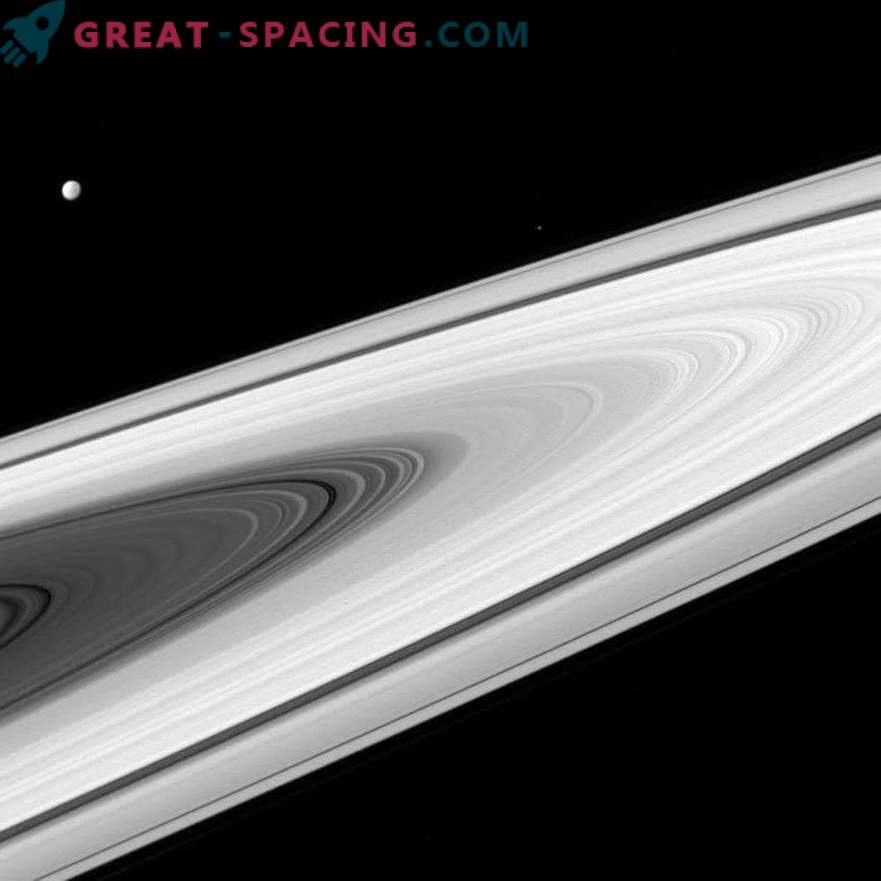
This image was obtained by Cassini on April 2, 2016 at a distance of 413,000 km. The main rings and satellites are much brighter than distant stars. Therefore, less exposure time (10 milliseconds) is needed to saturate the camera detectors. Cassini often catches stars, especially if the target satellite is in an eclipse. Dion (1123 km) and Epimetheus (113 km) are displayed here. The device looks at the illuminated side of the rings 3 degrees above their plane. For shooting used the visible light of a wide-angle camera with a scale of 25 km per pixel. The Cassini program is a general development of ESA, NASA and the Italian Space Agency. The team is located at the lrd. Two cameras on board are also created by them. The extracted photos are processed in Boulder (Colorado).
The observed perturbation at the edge of the ring is approximately 750 miles (1200 kilometers) long and 6 miles (10 kilometers) wide, but the estimated crumb-moon can most likely be no more than half a mile in size if its existence is indeed confirmed. A recorded observation was made on April 15, 2013 using a narrow-angle Cassini camera, but the discovery made was announced in an article published only recently in the journal Icarus. Saturn's moons are small ice worlds and many scientists believe that they were formed through the agglomeration of material from the extensive system of rings that surround the planet to this day.
Although there is a possibility that the observed phenomenon is the exciting birth of another small satellite, but it is also possible that the detected object is just a previously unrecognized small moon, which is now in the process of “parting”. But astronomers still hope that for the first time they witnessed the formation of a new small moon in the solar system, to which they have already given the name “Peggy”. "
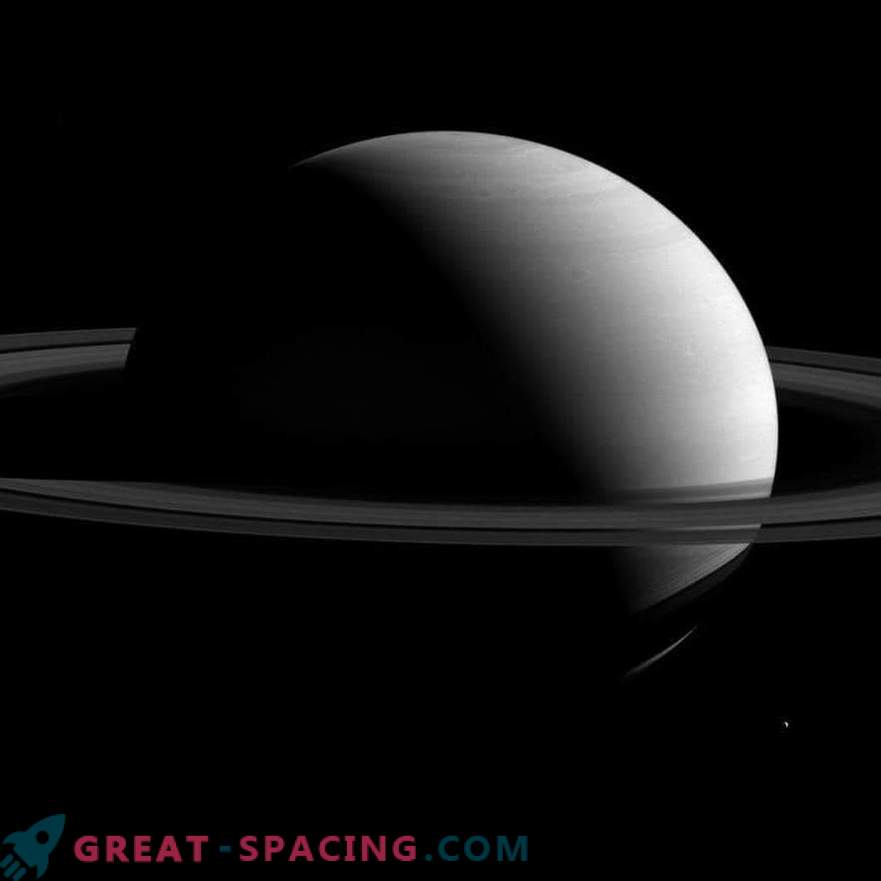
Sometimes we forget that Saturn is 10 times larger than the earth's diameter. With an indicator of 116500 km, he simply covers the whole of his lunar family. But at the bottom right you can see Tefiyu (diameter - 1062 km). On March 7, 2015, the device was installed above the illuminated side of the rings 8 degrees above the plane. For shooting, a wide-angle camera with a spectral filter with a center of 752 nanometers was used. Scale - 16 km per pixel. Cassini is located at a distance of 2.6 million km from Saturn and 2.4 million km from Tethys with a scale for it - 14 km per pixel. Satellite doubled to improve visibility. The Cassini program is a general development of ESA, NASA and the Italian Space Agency. The team is located at the lrd. Two cameras on board are also created by them. The extracted photos are processed in Boulder (Colorado).
“The birth of a tiny moon that we may have witnessed is an exciting, unexpected event,” said Linda Spilker, a scientist from NASA’s Cassini project. As a rule, Saturn’s moons are larger in size as their orbits are farther from the planet. As for the history of the evolution of these satellites, then, apparently, those of them who have migrated from orbits close to the planet are captured along the way by smaller satellites in the course of their movement. As a consequence, the rings of Saturn lose material for the formation of moons, so, most likely, “Peggy” will be one of the last moons formed.
“The theory claims that Saturn used to have a much more massive ring system capable of spawning large moons,” said Murray. “As soon as the moons formed on the edge of the rings, they absorbed smaller objects in their development, depleting the rings, so those that appeared before everyone else are the largest and are farthest from the rest.”
In 2016, the Cassini orbit will approach the outer edge of the A-ring, which may provide an opportunity to see the tiny moon in the process of “growing up”.









